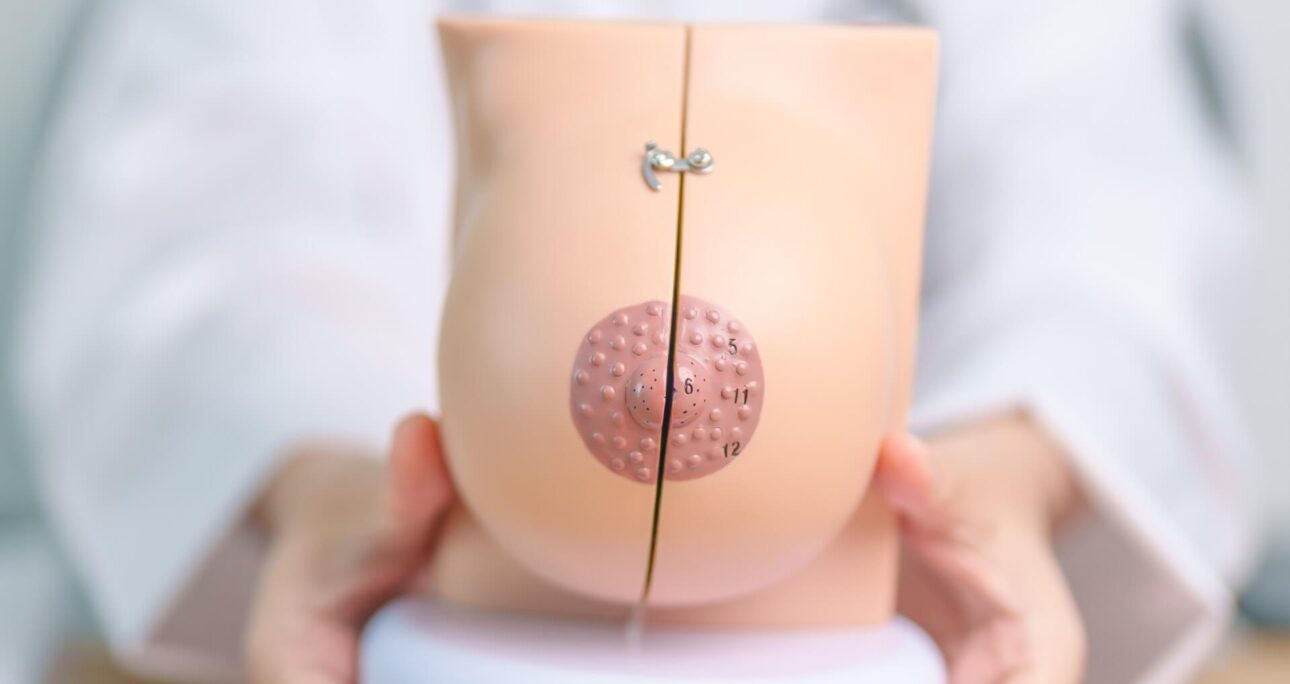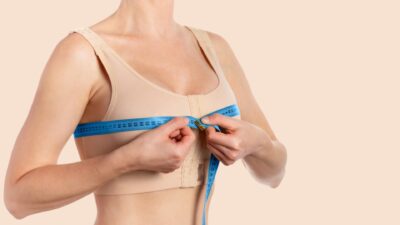Saggy skin is an inevitable result of drastic weight loss. The stretched skin oftentimes does not bounce back after extreme loss. This can lead to a lot of discomfort and reduced mobility. To add to this, one’s breasts also begin to sag, shifting the nipple lower. Saggy breasts and low nipples can cause chafing and irritation in the summer. Furthermore, they can also cause strain on the back and neck, leading to bad posture. Usually, women opt for a breast reshaping surgery after their bariatric surgery to get lifted breasts. Nipple repositioning is often combined with this procedure as well. Stick with us to know what to expect when getting nipple repositioning surgery after weight loss.
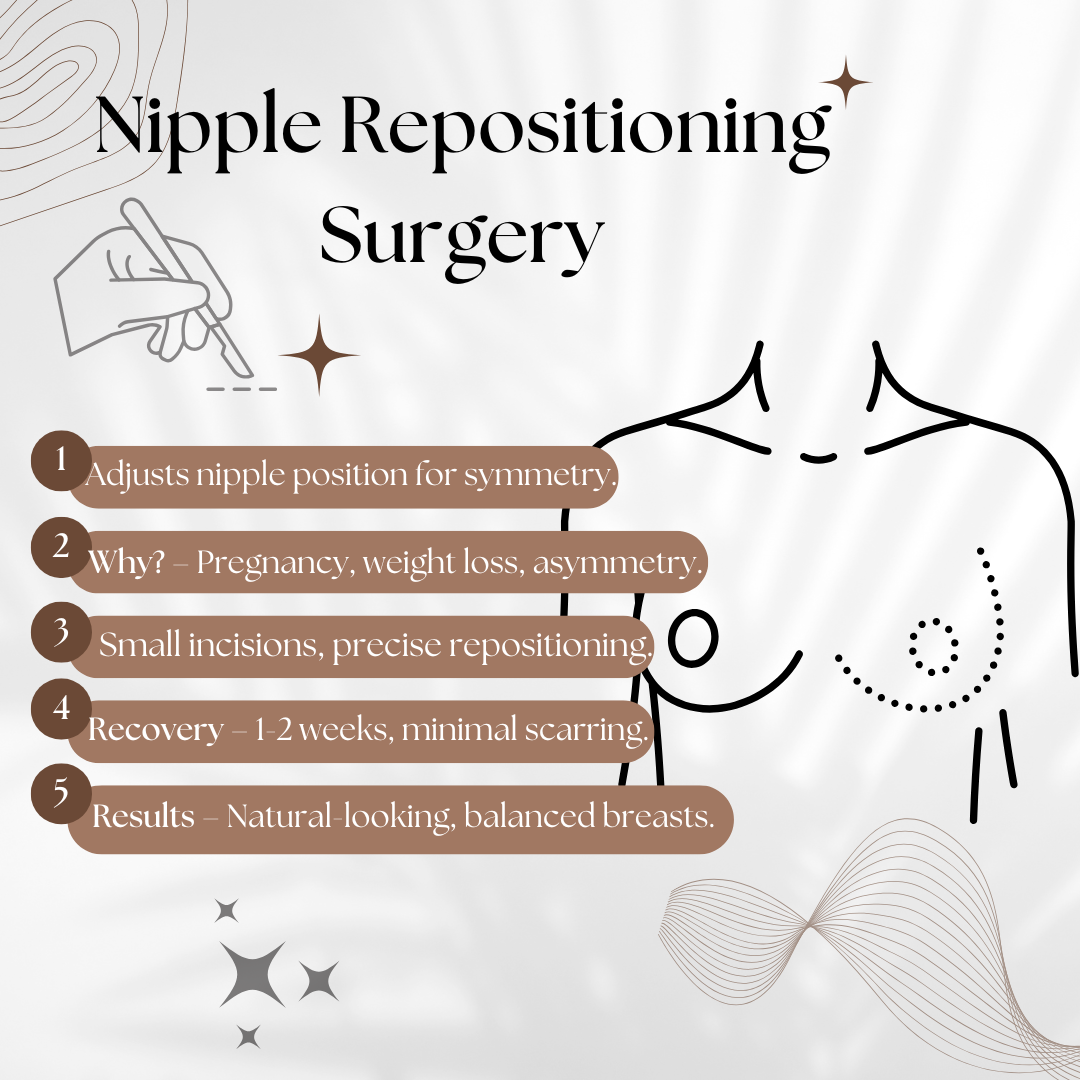
✂️ Why Nipple Repositioning Is Needed After Weight Loss
Nipple repositioning is a frequent part of breast reshaping post-bariatric surgery. The key reasons for nipple repositioning after significant weight loss are as follows:
Loss of Volume
The composition of breast tissue is predominantly fatty. Due to significant weight loss, there is a decrease in fat stores in the body, especially in the breast tissue. This leads to a deflated aesthetic in this area, resulting in the downward movement of the nipples. Correcting sagging nipples by nipple repositioning surgery restores the natural contours of the breasts.
Skin Sagging And Breast Ptosis
Losing too much weight in a small amount of time doesn’t allow the skin to bounce back into its pre-weight-gain position. Therefore, people who lose a lot of weight quickly have to contend with saggy and stretched skin folds. This results in the nipples shifting lower than the breast crease, a condition known as Breast Ptosis. Nipple repositioning is an effective way to deal with this cosmetic concern.
Loss of Proportions
In some scenarios, the nipples maintain their position; however, due to the sagging of the breast tissue as a whole, there is significant asymmetry or loss of proportions. Female or male nipple repositioning can improve the symmetry and aesthetics of the area.
Cosmetic Appeal
By restoring the position of the breasts higher on the chest and repositioning the areola and nipples, cosmetic surgeons ensure better posture and overall aesthetics. After surgery, the clothes fit better, and people feel more confident in social situations.
🔴 Nipple repositioning may be needed in both male and female patients who have lost a significant amount of weight in a fairly short amount of time. At times, nipple repositioning is combined with areolar reduction surgery for better proportions and symmetry. A nipple repositioning is commonly performed as a part of a Breast Lift (Mastopexy), Breast Augmentation, or Breast Reduction surgery.
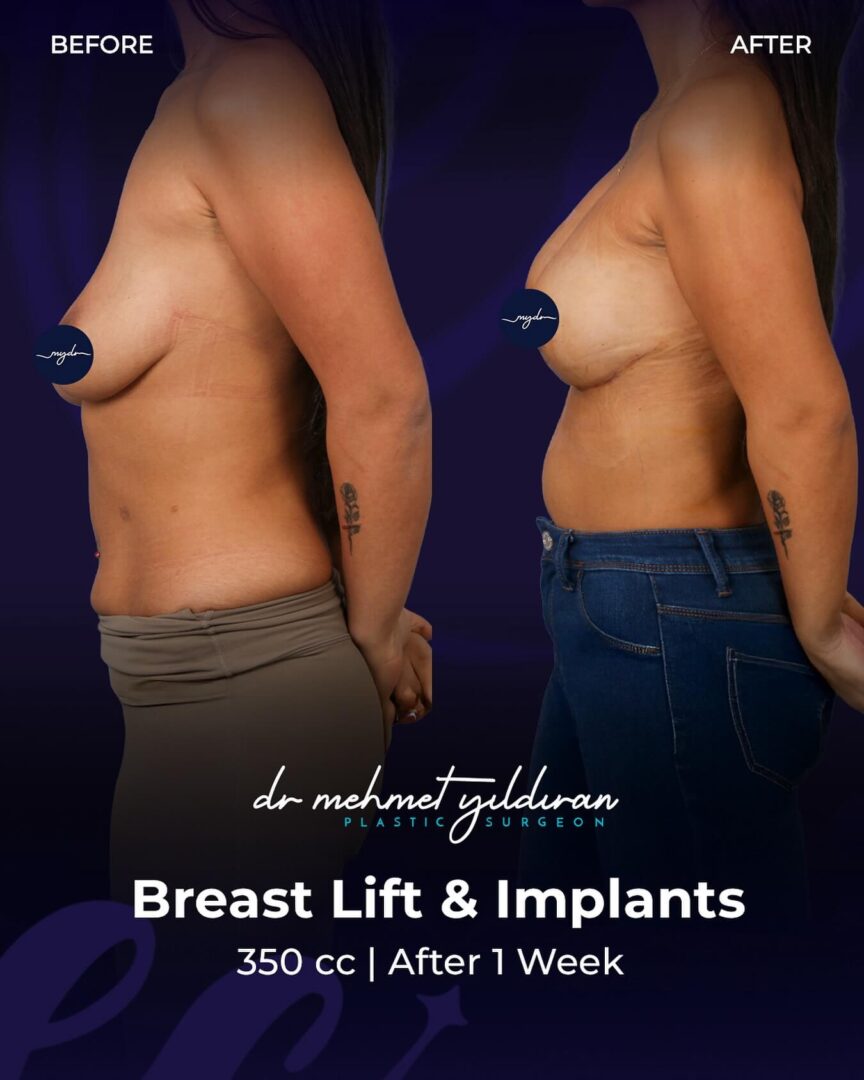
👙 The Nipple Repositioning Procedure
The goals of nipple repositioning are to restore symmetry, proportions, and prevent skin irritation by enhancing the aesthetics of the breast tissue.
A. Surgical Techniques
The following surgical techniques are employed to achieve nipple repositioning after weight loss:
Periareolar Lift (Donut Lift):
Commonly known as a Donut Lift, a Periareolar lift, or Periareolar Mastopexy, is a surgical technique in which the nipple-areola complex is slightly elevated. The procedure is suitable for individuals with mild to moderate breast ptosis/sagging.
During the surgery, a donut-like incision is applied at the areolar edge. The excess skin (the donut) is removed, and the rest is sutured, moving it closer to the areola and producing a slight lifting effect. This is a minimally invasive surgery that is frequently performed together with a Breast Augmentation procedure.
Vertical or Anchor Lift (Mastopexy):
A vertical lift and an Anchor Lift are two different breast lifts that are suitable for moderate to severe breast sagging. Both techniques achieve significant improvement in nipple position as well. In a vertical lift, the incision is like a lollipop in shape. It is applied around the areola and extends down to the breast crease. The location and extent of the incision in an Anchor Lift are mostly similar; however, it looks like an inverted T.
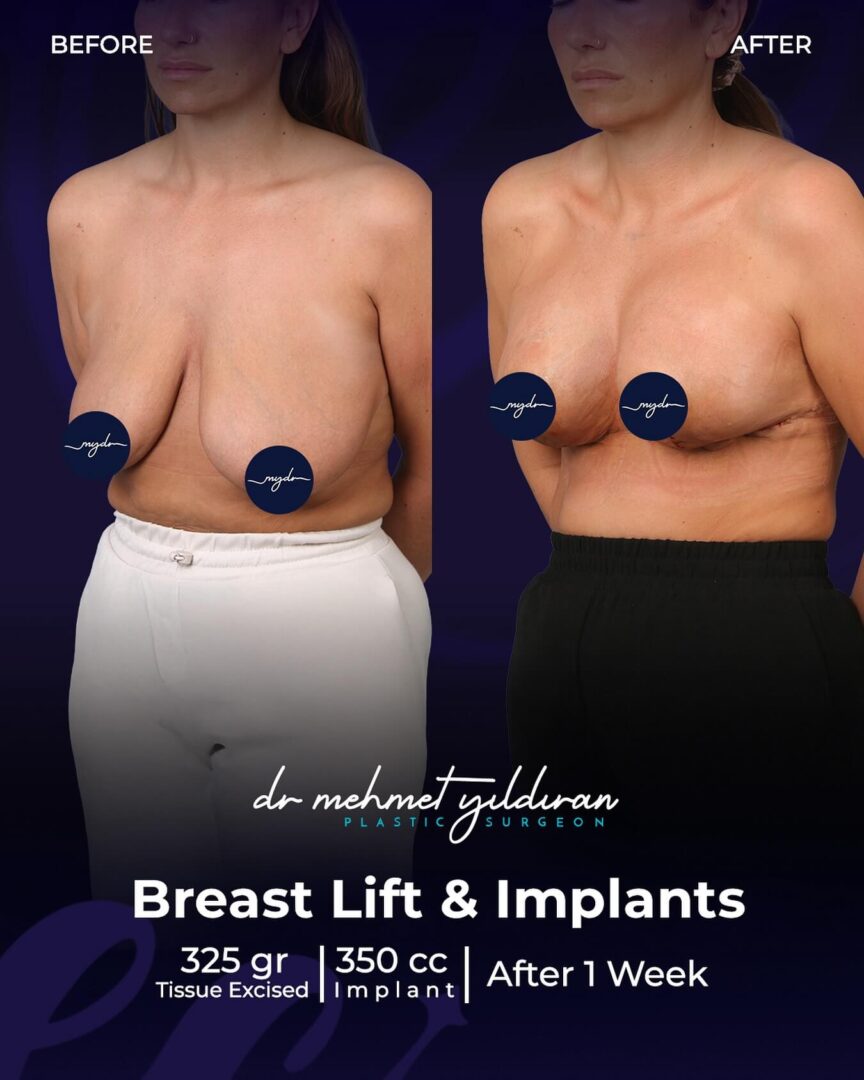
B. Combined Procedures:
Nipple repositioning is often a part of breast cosmetic surgery (Breast Augmentation, Breast Reduction). The combination of surgical techniques depends on the extent of breast sagging and skin laxity. Male nipple repositioning is performed for procedures such as gynaecomastia, sudden weight loss, etc.
C. Anesthesia & Surgery Time:
Breast procedures typically last for 2-3 hours and are performed under general anesthesia.
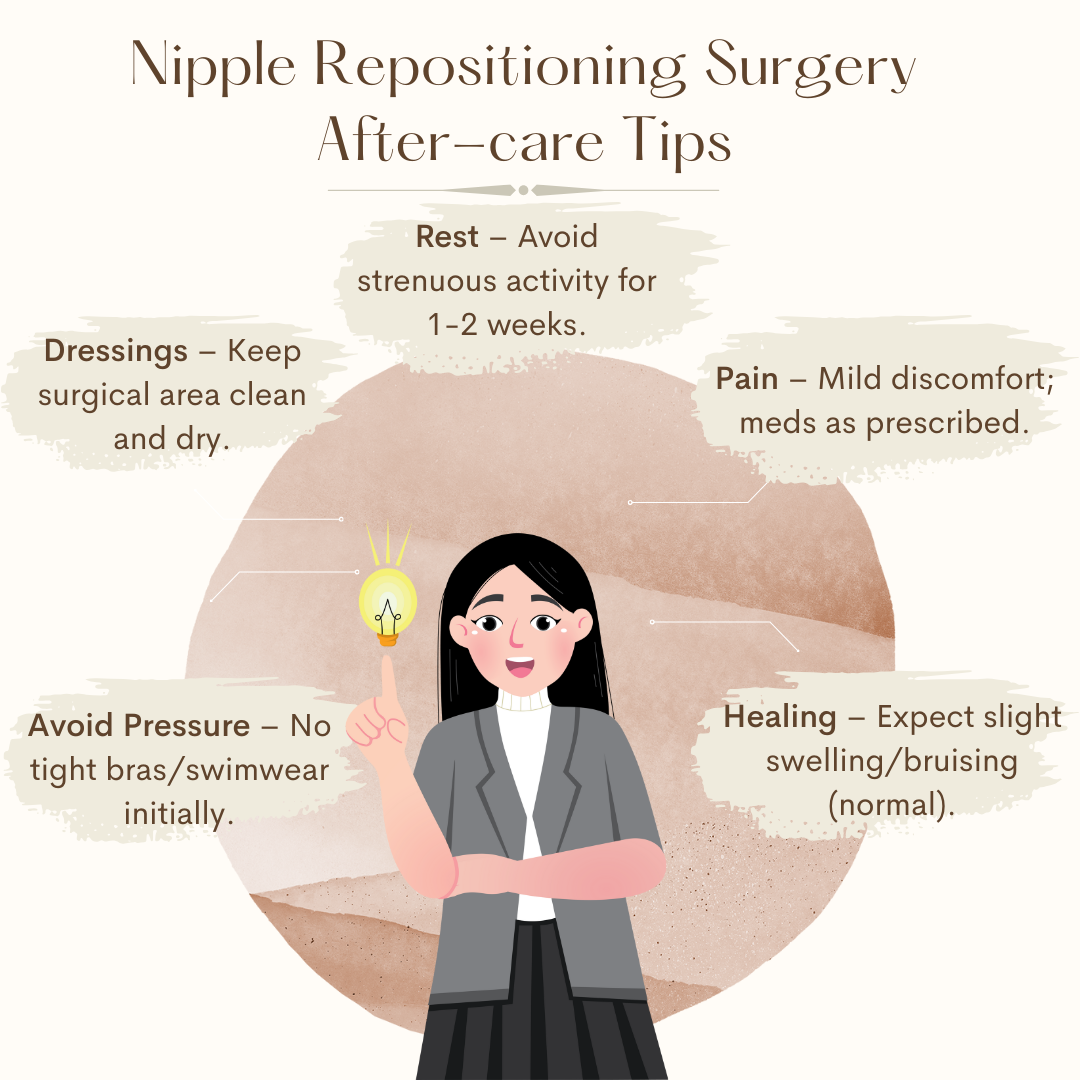
🎯 Recovery Timeline & Aftercare
The nipple lift surgery after weight loss, when done on its own, can require about 10 days for early healing. When combined with any other breast surgery, the healing time can be longer.
- The first 7 days after surgery will require the most care since this is the time when there will be a lot of bruising and sensitivity. The surgeon will recommend that you not be involved in any strenuous activity and get ample rest.
- The second week will involve a reduction in swelling and progress in the healing of the wound as the stitches are removed. The patient can start some light activity by week 4, but still avoid any heavy lifting to let the body fully heal.
- Once the patient has passed the 6-week mark, they will notice a gradual reduction in the appearance of the surgical scar. By this time, the nipple has fully settled, and its position becomes more apparent.
Nipple Repositioning Surgery Aftercare
You should avoid smoking for weeks before your surgery to ensure proper healing after the surgery. Sticking to a nutritious diet will also help ensure seamless healing after surgery.
Your nipple will be covered with a dressing after the surgery, and this dressing will stay until your surgeon removes it during your follow-up appointment. Your surgeon will also guide you on how to keep your incision clean and care for your incision at home.
You will also have to wear a compression bra at all times during the first few weeks for better support and to keep swelling to a minimum.
⚡ Get Your Consultation Booked with Dr. Mehmet Yildiran!
Dr. Mehmet Yildiran is a board-certified plastic surgeon with extensive expertise in achieving natural-looking results and providing patient-centric care. Book your consultation with him today.


